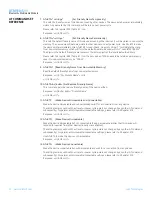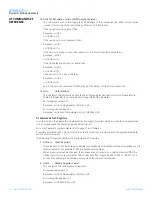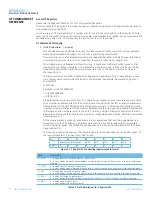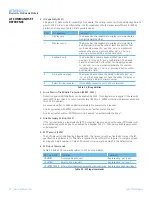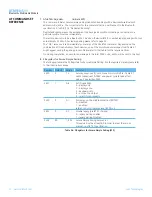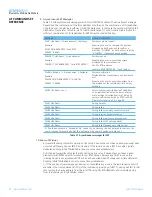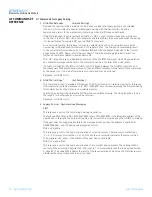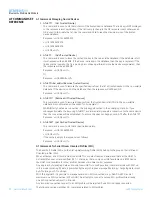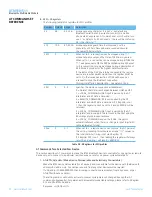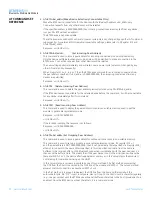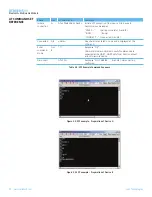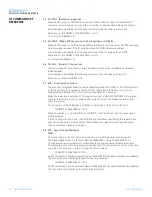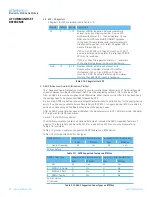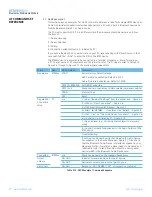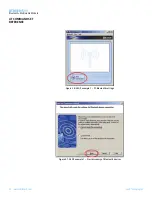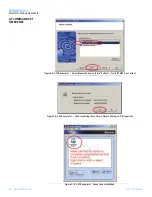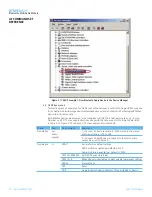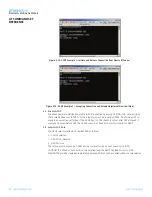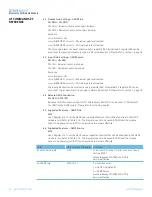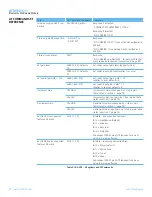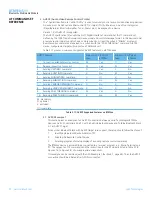
28
www.lairdtech.com
Laird Technologies
BTM510/511
Bluetooth
®
Multimedia Module
2. AT+BTG<bd_addr> {Make Device Selectively Connectable Only}
Make the BTM device connectable for the device with the Bluetooth address <bd_addr> only.
Connection requests from any other devices will be rejected.
If the specified address is 000000000000 then incoming connections are accepted from any device,
is as per AT+BTP without an address.
The BTM device is not discoverable.
The setting remains valid until next reset or power cycle (unless not changed by any other AT command
subsequently). For permanent discoverable/connectable settings, please refer to S Register 512 and
AT+BTM<bd_addr>
Response: <cr,lf>OK<cr,lf>
3. AT+BTM<bd_addr>
{Set Incoming Peer Address}
This command is used to store a peer address for incoming connections in non-volatile memory.
Only the device with Bluetooth address <bd_addr> will be permitted to make a connection to the
BTM device. Connection requests from other devices will be rejected.
The new setting applies immediately and will retain over a power cycle (unless not changed by any
other AT command subsequently).
When S register 512 = 3, 4, 6 or 7 then the BTM device will wait for an incoming connection from
the peer address specified. If <bd_addr> is 000000000000, then incoming connections from any
devices are permitted.
Response: <cr,lf>OK<cr,lf>
4. AT+BTM {Delete Incoming Peer Address}
This command is used to delete the peer address previously stored using AT+BTM<bd_addr>.
If the BTM device was connectable for the selected device before this command, it will be connectable
for any device immediately after this command.
Response: <cr,lf>OK<cr,lf>
5. AT+BTM? {Read Incoming Peer Address}
This command is used to display the peer address stored in non-volatile memory, used to put the
module in pure cable replacement mode.
Response: <cr,lf>12346789012
<cr,lf>OK<cr,lf>
If the location is empty, the response is as follows.
Response: <cr,lf>00000000000
<cr,lf>OK<cr,lf>
6. AT+BTR<bd_addr> {Set Outgoing Peer Address}
This command is used to store a peer address for outbound connections in non-volatile memory.
This command is used to set up a module in pure cable replacement mode. If S register 512 = 1
and the peer address is NOT 000000000000, then it will periodically (time specified via S register 505)
attempt to connect to the peer address specified. In this circumstance all data from the host are
buffered in the receive buffer, until a Bluetooth connection is established with the peer device and it
then sends the buffer across. This means that if the peer device is not in the vicinity and will never be
there and S507=1 or 2, the device effectively becomes useless, as in this circumstance the module is
not listening for commands arriving on the UART.
In this circumstance, a recovery is possible by one of two methods. The first method assumes that
the DTR from the host is connected to the DSR line of the module and S507=1. The second method
assumes that this connection is absent and S507=1 or 2.
In the first method it is enough to deassert the DTR line from the host and that will abort the
autoconnect cycle. No “OK” is sent in response. Hence it is up to the host to send a character regularly
(e.g., one per second) until the BTM device echoes all buffered characters to the host (provided echo is
enabled). Once the BTM device echoes characters, it is in command mode.
AT COMMAND SET
REFERENCE

